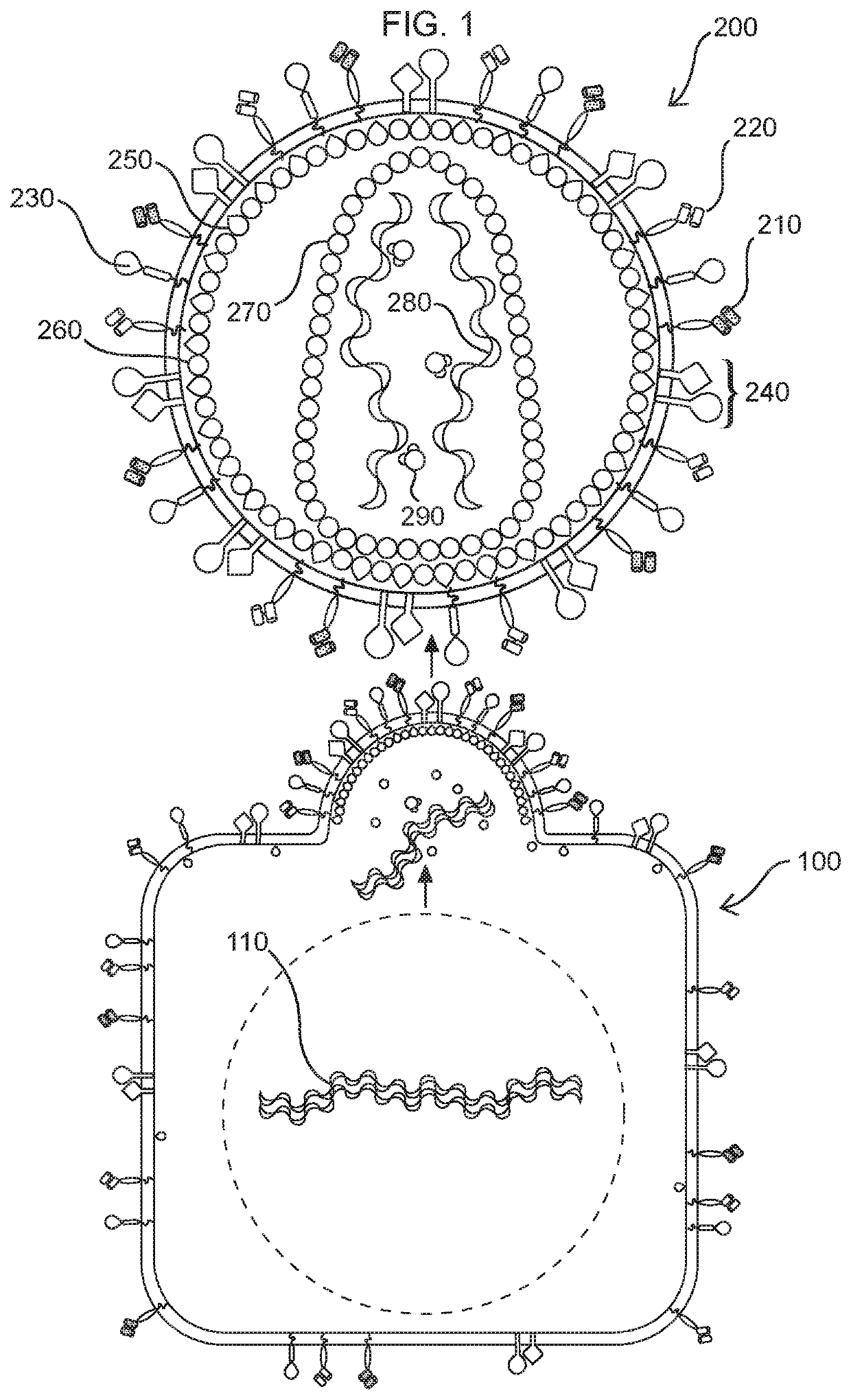Methods and compositions for transducing lymphocytes and regulated expansion thereof
a technology of lymphocytes and compositions, applied in the field of immunology, can solve the problems of cell viability and sterility, inability to control the propagation rate of car therapies in vivo, and not be safely directed towards targets, and achieve the effect of increasing the proliferative activity of the lymphoproliferative elemen
- Summary
- Abstract
- Description
- Claims
- Application Information
AI Technical Summary
Benefits of technology
Problems solved by technology
Method used
Image
Examples
example 1
n of Riboswitches that Respond Specifically to Nucleoside Analogue Antiviral Drugs
[0602]This example provides a method to screen libraries based on natural structural riboswitches that bind guanosine and deoxyguanosine. These riboswitches were used as scaffolds to develop biased libraries for the selection of aptamers that bind specifically to a ligand nucleoside analogue. Previously, isothermal titration calorimetry has been used to show these natural riboswitches bind to their native ligands. Additional tests showed a deoxyguanosine switch also interacted weakly with the nucleoside analogues acyclovir and penciclovir, leading to the re-design of this sequence into a new library. The single-stranded regions of the riboswitch were targeted for mutation and variant sequences that specifically respond to acyclovir or penciclovir were selected for.
Materials
[0603]Selection components guanine, guanosine, deoxyguanosine, acyclovir, and penciclovir were ordered from Sigma-Aldrich (St. Loui...
example 2
of Conditional scFv's
[0623]Potential splice site liabilities are removed and tumor antigen specific scFv's are synthesized by overlapping oligo synthesis and cloned into the CAR shuttle construct containing the acyclovir responsive element and the primate CD3 promoter. As an initial prototype, anti-ECD of EPCAM or ERBB2scFv with a CD8-alpha signal peptide, stalk, and transmembrane domain is utilized. Solid tumor microenvironment restricted CAR products are generated either using methods as described in U.S. Pat. No. 8,709,755 and PCT Publication No. WO / 2016 / 033331A1 or by direct selection from human phage libraries under permissive and non-permissive conditions. Briefly, a human VH×VL library from Creative Biolabs (Shirley, N.Y.) is panned in the following tumor permissive conditions: 100 μg / ml hyaluronan, 100 kDa fraction (Lifecore Biomedical, Chaska, Minn.), 20 mg / ml recombinant HSA (Cyagen, Santa Clara, Calif.), 200 ng / ml recombinant human VEGF in 25 mM sodium bicarbonate buffer,...
example 3
n of MRB-CARs Using Microenvironment Restricted scFv's
[0624]Microenvironment restricted ASTRs were obtained that were made by subjecting VH and VL sequences with low selectivity for the tumor microenvironment to evolution as described in application WO / 2016 / 033331A1. Chimeric antigen receptors (CARs) for binding either of two tumor antigens, Axl or Ror2, with increased activity at the reduced pH of a tumor environment compared to normal tissue (such microenvironment restricted biologics is sometimes referred to herein as (MRB-CARs) were made by incorporating the heavy chains and light chains of the microenvironment restricted single-chain antibodies into lentiviral expression vectors along with other CAR domains to generate MRB-CARs. These CARs included various combinations of modules from amino to carboxy terminus, which included a CD8 signal peptide (P1) (SEQ ID NO:74); microenvironment restricted anti-Ror2 and Anti-Axl VH and VL combinations; a stalk and transmembrane domain from...
PUM
 Login to View More
Login to View More Abstract
Description
Claims
Application Information
 Login to View More
Login to View More - R&D
- Intellectual Property
- Life Sciences
- Materials
- Tech Scout
- Unparalleled Data Quality
- Higher Quality Content
- 60% Fewer Hallucinations
Browse by: Latest US Patents, China's latest patents, Technical Efficacy Thesaurus, Application Domain, Technology Topic, Popular Technical Reports.
© 2025 PatSnap. All rights reserved.Legal|Privacy policy|Modern Slavery Act Transparency Statement|Sitemap|About US| Contact US: help@patsnap.com



